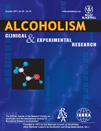Artificial Sweeteners, Caffeine, and Alcohol Intoxication in Bar Patrons
Abstract
Background: Previous laboratory research on alcohol absorption has found that substitution of artificially sweetened alcohol mixers for sucrose-based mixers has a marked effect on the rate of gastric emptying, resulting in elevated blood alcohol concentrations. Studies conducted in natural drinking settings, such as bars, have indicated that caffeine ingestion while drinking is associated with higher levels of intoxication. To our knowledge, research has not examined the effects of alcohol mixers that contain both an artificial sweetener and caffeine, that is, diet cola. Therefore, we assessed the event-specific association between diet cola consumption and alcohol intoxication in bar patrons. We sought to determine whether putative increases in blood alcohol, produced by accelerated gastric emptying following diet cola consumption, as identified in the laboratory, also appear in a natural setting associated with impaired driving.
Methods: We conducted a secondary analysis of data from 2 nighttime field studies that collected anonymous information from 413 randomly selected bar patrons in 2008 and 2010. Data sets were merged and recoded to distinguish between energy drink, regular cola, diet cola, and noncaffeinated alcohol mixers.
Results: Caffeinated alcohol mixers were consumed by 33.9% of the patrons. Cola-caffeinated mixed drinks were much more popular than those mixed with energy drinks. A large majority of regular cola-caffeinated mixed drink consumers were men (75%), whereas diet cola-caffeinated mixed drink consumers were more likely to be women (57%). After adjusting for the number of drinks consumed and other potential confounders, number of diet cola mixed drinks had a significant association with patron intoxication (β = 0.233, p < 0.0001). Number of drinks mixed with regular (sucrose-sweetened) cola and energy drinks did not have significant associations with intoxication (p > 0.05).
Conclusions: Caffeine’s effect on intoxication may be most pronounced when mixers are artificially sweetened, that is, lack sucrose which slows the rate of gastric emptying of alcohol. Risks associated with on-premise drinking may be reduced by greater attention given to types of mixers, particularly diet colas.




